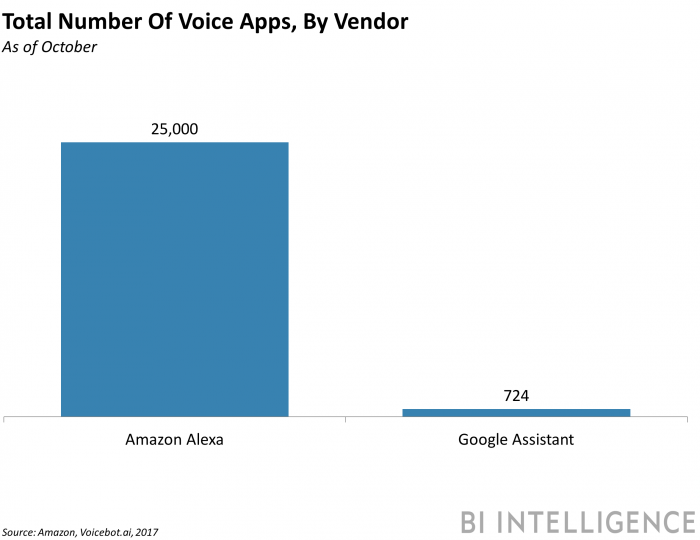Google Assistant rolls out new features to win over developers (GOOGL)

BI Intelligence
This story was delivered to BI Intelligence Apps and Platforms Briefing subscribers. To learn more and subscribe, please click here.
Google is aiming to make its Google Assistant voice platform more appealing to developers with a slew of new features announced in a post Wednesday.
The new features highlight tools that can help developers to create a more interactive user experience, better voice app discovery interfaces, and new capabilities to assist developers in re-engaging users.
Here are some of the new tools and expanded features Google’s hoping will win over voice developers:
Expanded language support. Developers are now able to build apps in Spanish, Italian, Portuguese, and Indian English. The ability for developers to reach and interact with users in more languages can help to expand Google Assistants’ global audience and can spur usage of developers’ apps.
Accessibility of Google Assistant across devices. Googled rolled out speaker-to-phone transfer, a new API that makes it possible to begin an action on one device, such as a Google Home speaker, and complete it on another, like a smartphone. This enables developers to create apps that take advantage of multiple devices.
Improved app discovery. Google added “implicit discovery” to help users interact with Google Assistant in a more natural way when launching actions in apps. For example, a user can tell Google Assistant “Get me a rental car” and it may respond by launching the Enterprise app. Google also added "what’s new," "what’s trending," and additional subcategory sections to its app directory. This creates more opportunities for developers' apps to be discovered by users.
Advanced methods to re-engage users. A new push notification API enables apps to send out important updates to users. This could help keep users on the most up to date version of developers’ apps. Google also rolled out directory analytics to help developers capture insights into how users are interacting with their apps. Gaining an understanding of how users engage with apps with information such as an app’s rating, number of page views, and number of conversion can aid developers in improving the experience for their users in ways that they will respond to.
Incentivizing developers to build voice apps for Google’s platform is crucial to staying competitive in the burgeoning voice assistant market. That's because the more voice apps out there, the more useful the voice platform can potentially be for consumers. And more voice apps across a wider variety of tasks can make a voice assistant more appealing than rival voice platforms. Currently, Amazon’s Alexa is leading the nascent voice assistant space — As of October, it had 25,000 skills compared with Google’s 724. But these new features and capabilities could be key in helping Google expand its footprint in the voice assistant arena.
Jessica Smith, research analyst for BI Intelligence, Business Insider's premium research service, has compiled a detailed report on the voice assistant landscape that:
Identifies the major changes in technology and user behavior that have created the voice assistant market that exists today.
Presents the major players in today's market and discusses their major weaknesses and strengths.
Explores the impact this nascent market poses to other key digital industries.
Identifies the major hurdles that need to be overcome before intelligent voice assistants will see mass adoption.
To get the full report, subscribe to BI Intelligence and gain immediate access to this report and more than 250 other expertly researched reports. As an added bonus, you'll also gain access to all future reports and daily newsletters to ensure you stay ahead of the curve and benefit personally and professionally. » Learn More Now
See Also:

 Yahoo Finance
Yahoo Finance 
